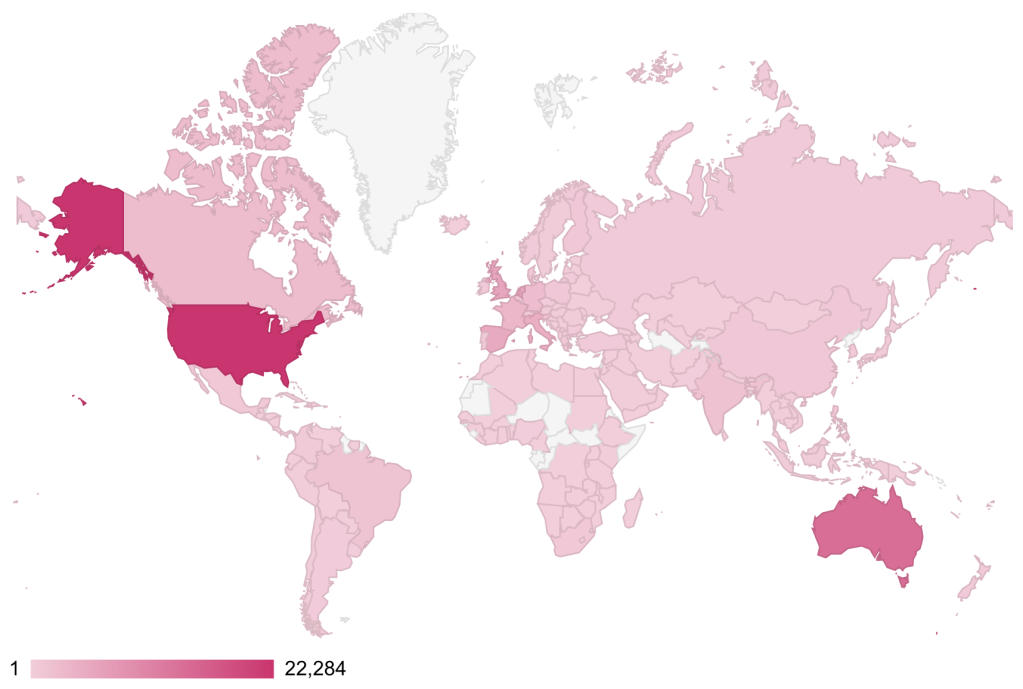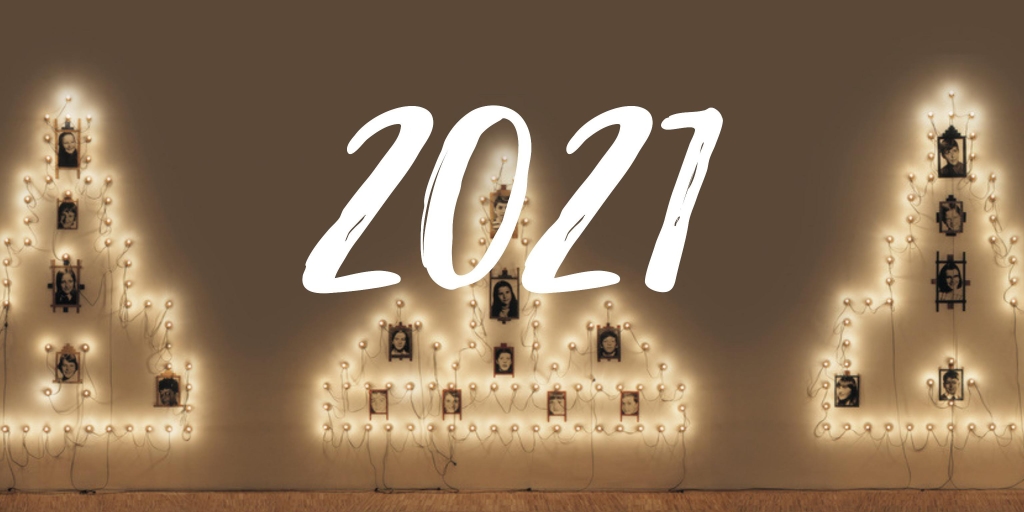By the Editorial Team
We are grateful to all the researchers who have shared their excellent work through our blog, enabling us to bring you 141 inspiring contributions on the fortnight for the past 6 years. With roughly 10,000 yearly visitors, 300+ subscription to the site, 3,400+ on , 600+ on and nearly 150 on our newly created , we are also indebted to you who reads, likes, comments, and further shares the voices of the cultural economists in our community.
This year, we had the pleasure on presenting you 21 articles on diverse topics, from AI in music to anonymous art at auction.

In 2021, our readers were mainly located in the US, followed by Italy, Spain and The Netherlands, but clearly represent a great diverse audience. Since the blog was launched in 2015, the overall readership per country is as follows:

The 2 most viewed post in 2021 were:
DO MUSEUMS FOSTER INNOVATION THROUGH ENGAGEMENT WITH THE CULTURAL AND CREATIVE INDUSTRIES?
By Chiara Dalle Nogare and
The recent narrative on museums as catalysts of innovation considers their relations with other cultural and creative industries to be very important. To verify this claim, we propose a conceptual framework qualifying these relations as either strong, moderate, or weak links, according to their potential in terms of knowledge spillovers from museums to the CCIs. We apply this classification to data collected from Polish museums. Our findings indicate that strong links are outnumbered by moderate and weak ones.
MUSEUM FUNDING IN TIMES OF COVID-19 CRISIS
By Carmen Camarero, Maria José Garrido, and Eva Vicente
In the current health and economic crisis triggered by Covid-19, the future of museums is facing a major financial challenge, a challenge that has appeared when the echoes of the previous crisis are still ringing. Indeed, this crisis has reopened the debate over museum funding.
Something very special in 2021 was the launch of our CEOS – Cultural Economics Online Seminar, where we discussed one blog post with a highly engaged audience:
BEYOND THE REALM OF CASH: STREET PERFORMERS AND DONATIONS IN THE ONLINE WORLD
By Meg Elkins and Tim R.L. Fry
The exchange for money between street performers and audiences is a changing landscape. Using unique data from an online platform The Busking Project we investigate what type of street performers, who engage with the platform, are more likely to receive donations and which characteristics generate higher dollar amounts of donations.
The online seminars can be found on our . The most viewed seminar so far is our first edition, with various speakers on COVID-19 and the Arts.
Our all-time top 5 posts are:
THE ARTS CONNECT STUDENTS TO SCHOOL
By M. Kathleen Thomas
Student enrolment in public school courses in visual art, music, theatre, and dance is linked to reduced high school dropout even after controlling for observable student and school characteristics expected to influence both arts participation and school commitment. Agencies that support arts education should invest in experimental studies to produce causal evidence about the impact of arts on the student outcomes stakeholders care about.
WHY ARE THERE SO MANY ART THEFTS, AND WHAT CAN BE DONE ABOUT THEM?
By Frederick Chen and Rebecca Regan
More than 50,000 pieces of artwork are stolen each year globally, and many cases of art crimes are facilitated by lax security at museums. How can economic theory account for these observations, and what kind of policies would help reduce the incidence of art thefts?
CAN WE MEASURE CULTURE IN CITIES?
By Valentina Montalto
Provided that culture uniquely defines a city, which urban contexts are more culturally vibrant? And in which ones does culture drive creative economies? This study presents a novel and freely accessible dataset – the Cultural and Creative Cities Monitor – gathering 29 indicators for 168 European cities. Capitals generally lead on ‘Creative Economy’ but non-capitals do better on ‘Cultural Vibrancy’.
MULTI-PLATFORM MEDIA: HAS DIGITIZATION REALLY GIVEN US MORE FOR LESS?
By Gillian Doyle
Nowadays more content is accessible, in more formats, on more devices, for more people than ever before. But, as media companies make the journey from being single sector to digital multi-platform suppliers of content, this transition has entailed numerous managerial and economic challenges.
We wish to bring you continuous reading pleasure in the new 2022 with a selection of leading authors in cultural economics. Should you have tips on articles to feature, or may you want to share your work, please be sure to contact us !
With best wishes
The Editorial Board: Marie, Cedric, Trilce and Andrej.
About the image:
Christian BOLTANSKI (1985) Photographies, ampoules électriques et fil électrique. Ville de Grenoble / Musée de Grenoble-J.L. Lacroix.

Leave a Reply